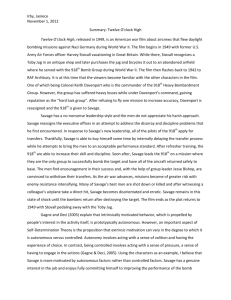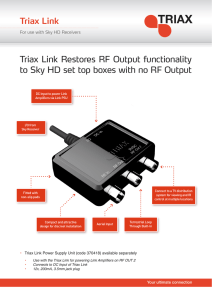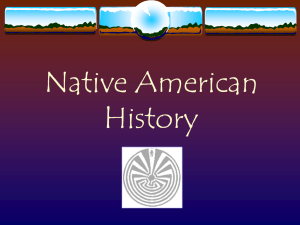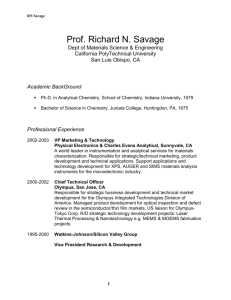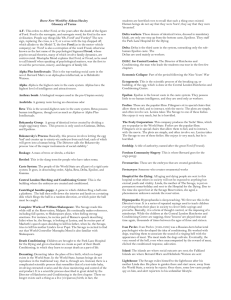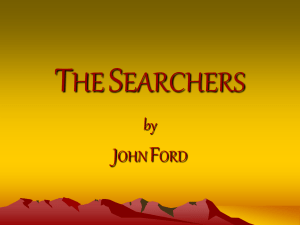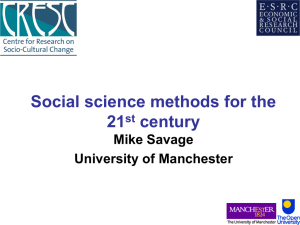Customer Service Standards
advertisement
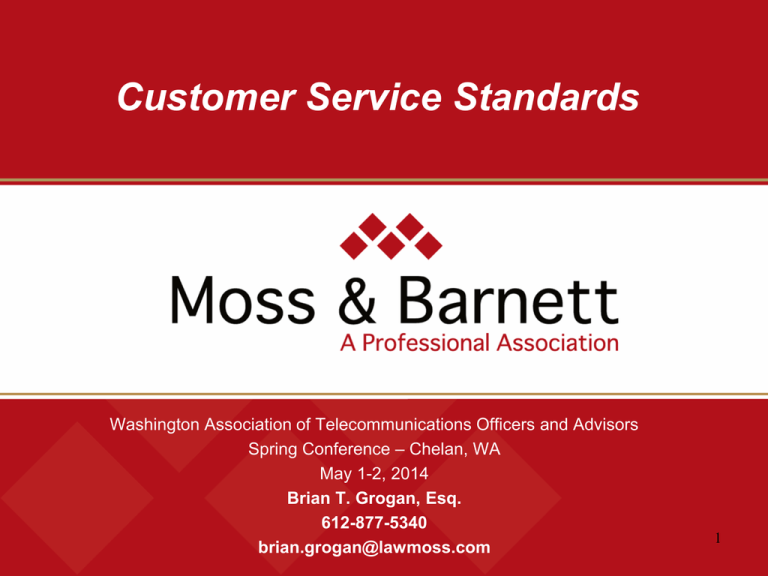
Customer Service Standards Washington Association of Telecommunications Officers and Advisors Spring Conference – Chelan, WA May 1-2, 2014 Brian T. Grogan, Esq. 612-877-5340 brian.grogan@lawmoss.com 1 Customer Service Many jurisdictions have adopted the FCC’s customer service obligations (47 C.F.R. § 76.309) Two main issues: 1. Telephone Response Time 2. Installations and Service Calls 2 Customer Service 1. Telephone Response Time – – 24/7 customer service Answer time within 30 secs (90%) • – – Under “Normal Operating Conditions (NOC)” Busy signal less than 3% Call received by automated response unit (ARU) • Or live human being 2. Installations and Service Calls – – – – Within 7 days of request 4 hour time block (during Normal Business Hours) Within 24 hours of interruption Begin corrections next business day 3 Regional Call Centers • Combining customer service operations to serve 100,000+ subscribers – Has resulted in loss of local presence/office • Many call centers handle multiple services – Cable Service – High-speed data (cable modem) – Local telephony 4 Call Center Performance • Some centers struggle handling voice, video and data service calls – Historical difficulty meeting 90% compliance • Industry has history of blaming poor telephone responsiveness on: – Voice and data service calls • Rollout of new services • Time consuming calls 5 Service Level Performance • TSL - Telephone Service Level TSL: HWSL / NCH – Calls answered in 30 seconds – NCO - Number of calls offered to the call center – NCH - Number of calls handled by the call center – HWSL - Number of calls handled within service level by call center – ASA - Average Speed of answer for all calls • Should be less than 30 seconds – % ATB - percentage all trunks busy > 3% 6 Month NCO NCH HWSL TSL ASA %ATB 2011-4 15795 15684 14769 94.2% 11.64 0% 2011-5 11867 11812 11332 95.9% 9.55 0.1% 2011-6 9203 9151 8659 94.6% 13.23 0.0% 36865 36647 34760 94.9% 11.30 0% Q2-QTD 7 Normal Operating Conditions • • Defined by FCC Within the control of operator – – – • Not within the control of operator – – – • Upgrades Rate increases Peak demand Power outages Weather Telephone network outages Operators often argue that their call centers are not under NOC 8 Normal Operating Conditions Example: Your system is served by regional call center covering entire state – – Storm 100 miles away results in heavy call volume Subscribers in your City can’t get through on telephone – Is operator relieved of compliance because it was not under NOC in part of their region? Between line cuts, weather, telephone & power outages will call center ever be under NOC? 9 Normal Operating Conditions • • The larger the call center the bigger the problem How can cities verify compliance with customer service standards? – Will objective local data be available? – If no local data will operator rely on regional data? • Scrubbed data v. raw data – Scrubbed data excludes time when operator is not under NOC – How is this calculated? – Does your franchise permit access to data? 10 City of Savage Case • City of Savage v. Triax Midwest Associates, L.P. – unpublished MN Court of Appeals decision 9/29/98 • City adopted FCC’s Customer Service Standards (CSS) – By providing Triax 90 days written notice • • • City also had CSS in Franchise Agreement City requested info to verify compliance Triax failed / refused to provide info 11 City of Savage Case • City found Triax in violation of franchise for its failure to: – – – – – – open customer service center during normal business hours provide monthly compliant log answer phones within 30 seconds ensure busy signal less than 3% under normal operating conditions provide 4 hour appointment window for installations and service calls provide written information to subscribers 12 City of Savage Case • • Triax challenged to MN Court of Appeals Court found City’s record – Contained substantial evidence supporting noncompliance • Record consisting of numerous subscriber complaints – Found to be sufficient despite lack of telephone records which Triax never produced • After decision Triax settled with City 13 City of Savage – Part II • City found new operator in violation of franchise on October 15, 2001 – Failure to provide quarterly telephone answering reports “specific to the system serving the city.” • In early 2002, City drew $26,250 from security fund under franchise 14 City of Savage – Part II • • Parties entered into Settlement Agreement in October 2002. Operator agreed to the following: 1. Special 800 # for customer service inquiries exclusively for Savage residents 2. Separate and dedicated trunk capacity to handle traffic on 800 Savage line 3. Separate 4 person staff of CSRs assigned exclusively to handle incoming calls from Savage residents 15 City of Savage – Part II 4. Designed customized software to track Savage only call information 5. Deploy roll-over lines for 24/7 live CSR assistance 6. Savage specific report format (14 days from end of quarter) • • Daily ACD report printouts Providing half hour by half hour call data 7. Financial settlement addressing City’s costs 16 Future?? • Are the FCC standards obsolete? – – – – • Email inquiries iPad applications On-line bill handling Self install kits Local office – Will there be local offices in the next few years? • Without local regulation – Will industry be governed by competition, or – Will cities have single provider and limited service 17 Thank You Brian T. Grogan, Esq. Moss & Barnett, A Professional Association 4800 Wells Fargo Center, 90 South Seventh Street Minneapolis, MN 55402-4129 (612) 877-5340 phone / (612) 877-5999 facsimile E-mail: brian.grogan@lawmoss.com Web site: www.lawmoss.com 18
